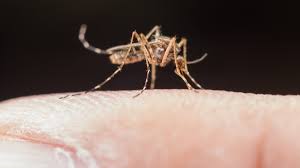As global health challenges continue to evolve, West Nile Fever has emerged as a significant concern, particularly in regions prone to mosquito-borne diseases. In response, health authorities are ramping up awareness campaigns to educate the public on the risks, symptoms, and preventive measures associated with this viral infection.
Understanding West Nile Fever
West Nile Fever is caused by the West Nile Virus (WNV), which is primarily transmitted through the bite of an infected mosquito. While many people infected with WNV do not exhibit symptoms, approximately 20% may develop mild flu-like symptoms, including fever, headache, body aches, and fatigue. In severe cases, the virus can cause neuroinvasive disease, leading to encephalitis or meningitis, which can be life-threatening.
The Importance of Awareness Campaigns
In cities like Mysuru, where recent efforts have focused on increasing public knowledge about West Nile Fever, awareness drives play a crucial role in disease prevention. These campaigns aim to inform residents about the modes of transmission, early symptoms, and the importance of seeking medical attention if symptoms arise. By enhancing public understanding, health officials hope to reduce the incidence of severe cases through early detection and intervention.
Key Symptoms to Watch For
Recognizing the symptoms of West Nile Fever is vital for early treatment and management. Common signs include:
– Fever and chills
– Headache
– Muscle aches
– Fatigue and weakness
In more severe cases, symptoms might progress to:
– High fever
– Stiff neck
– Disorientation or confusion
– Seizures
– Partial paralysis
Preventive Measures to Reduce Risk
Preventing mosquito bites is the most effective way to protect against West Nile Fever. Here are some practical tips to minimize exposure:
1. Use Insect Repellent: Apply repellents containing DEET, picaridin, or oil of lemon eucalyptus to exposed skin and clothing.
2. Wear Protective Clothing: Long-sleeved shirts and long pants can help reduce the skin area available for mosquito bites.
3. Eliminate Standing Water: Mosquitoes breed in stagnant water. Regularly empty and clean containers that collect water, such as flowerpots, birdbaths, and gutters.
4. Install Window and Door Screens: Ensure that all windows and doors have tight-fitting screens to keep mosquitoes out of the home.
5. Stay Indoors During Peak Mosquito Hours: Mosquitoes that carry WNV are most active from dusk to dawn. Limiting outdoor activities during these times can reduce the risk of bites.
Community Efforts and Health Initiatives
Community involvement is essential in combating West Nile Fever. Public health authorities in Mysuru have launched various initiatives, including distributing educational materials, organizing community clean-up drives to remove potential mosquito breeding sites, and conducting fogging operations to reduce mosquito populations.
Conclusion
West Nile Fever represents a growing public health challenge that requires concerted efforts from individuals, communities, and health authorities. By raising awareness and promoting preventive measures, the spread of this virus can be significantly curtailed. Stay informed, take preventive actions, and seek medical advice if symptoms occur to safeguard your health against West Nile Fever.
Source – Times of India



